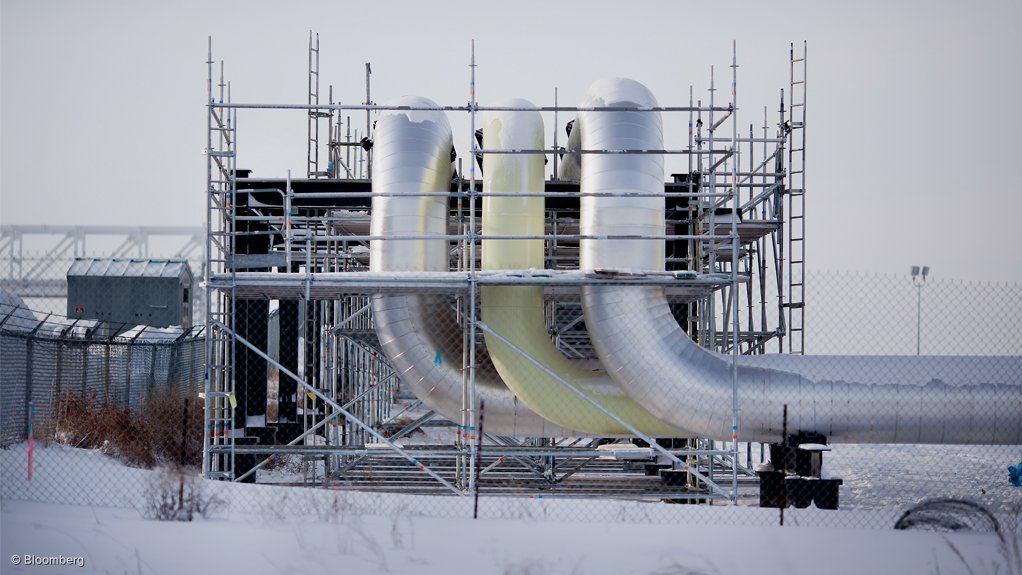TORONTO (miningweekly.com) – One good thing to come from the US's rejection of Canadian energy infrastructure operator TransCanada’s proposed Keystone XL pipeline, is the finality it brings to a drawn-out process spanning years, that could now perhaps provide the impetus needed to look for new opportunities to move Canadian oil to more receptive markets, such as in Asia, and specifically China.
While the impact of US President Barack Obama vetoing TransCanada’s Keystone XL pipeline would have a very minimal impact on Canada’s current oil industry, as no one really expected market change to come anytime soon, Canada needed to look at opening up new routes to new markets in Asia to secure long-term energy security for the country, Auspice Capital CEO Tim Pickering told Mining Weekly Online from Tokyo, Japan.
“It’s only one pipeline and has no immediate effect on the price differential Canadian oil producers get on their bitumen product in the US and global markets. We need to get to new markets. We’ve been too reliant on the US for too long,” he said, noting that the US had long been consuming 99% of Canadian sour crude.
Notwithstanding current regulatory headwinds in the US and a supply glut driving prices down, Pickering pointed out that Canada remained the most important crude supplier to the US and that this was unlikely to change in the foreseeable future. Canada’s Athabasca oil sands were large deposits of bitumen or extremely heavy, tarry crude oil, located in north-eastern Alberta, roughly centred on the boomtown of Fort McMurray. Canada held the world’s third-largest oil reserves.
West Texas Intermediate oil prices had been hovering below $50/bl for months now, hitting North American producers’ pockets hard. He explained that the Canadian oil industry was in a fortunate position that prices were driven lower by oversupply and not a lack of demand. Oversupply could react through production curtailments, whereas a lack of demand was harder to improve.
“Earlier this year, China became the number one oil importer in the world, so we still see significant growth in global demand,” Pickering said. Despite this, he noted that he was seeing supply starting to come off line as the supply side responded.
However, Pickering stressed that it was imperative to move more energy east in Canada, as well as more energy offshore to the west coast, which was complicated for environmental reasons, or the north, through hazardous Arctic waters. “We need to move oil to water and shipping routes to gain access to global markets, if the price differential is to ever decrease,” he stressed.
Energy giant Enbridge had proposed to increase oil transportation capacity through projects including the C$6-billion Northern Gateway pipelines from Alberta to Canada’s Pacific Coast. Another project comprised a new west-east pipeline within Canada that would send about 800 000 bbl/d of diluted bitumen from Alberta to refineries in Quebec and on Canada’s East Coast, most likely Irving Oil’s massive Saint John refinery, in New Brunswick – the largest in Canada and one of the ten biggest oil refineries in North America.
Canadian oil producers were also considering a pipeline north to the Arctic Ocean, seemingly hoping that the emerging ice-free shipping routes could be a path to get more crude to market. To that extent, Alberta had previously hired a consulting firm, Canatec Associates International, to study the feasibility of a pipeline to Tuktoyaktuk, in the Northwest Territories.
Safer methods of transporting Canadian bitumen were needed, as moving oil by rail was more costly and riskier, with disasters such as the 2013 fatal derailment and explosion of a fully laden oil train, which partially destroyed the town of Lac-Mégantic, in Quebec, still fresh in the industry's collective memory. The regulatory burden on rail shipments of crude and petroleum products had increased, with increased capital and operating costs for rail companies.
Pickering was also optimistic about potentially improving relations between Canada and its southern neighbour as a result of the federal Liberal regime change in Canada, noting that nothing much would change until the 2016 US elections had been completed. Until then, there would remain a lot of uncertainty until the politics had settled somewhat.
Edited by: Chanel de Bruyn
Creamer Media Senior Deputy Editor Online
EMAIL THIS ARTICLE SAVE THIS ARTICLE
To subscribe email subscriptions@creamermedia.co.za or click here
To advertise email advertising@creamermedia.co.za or click here













